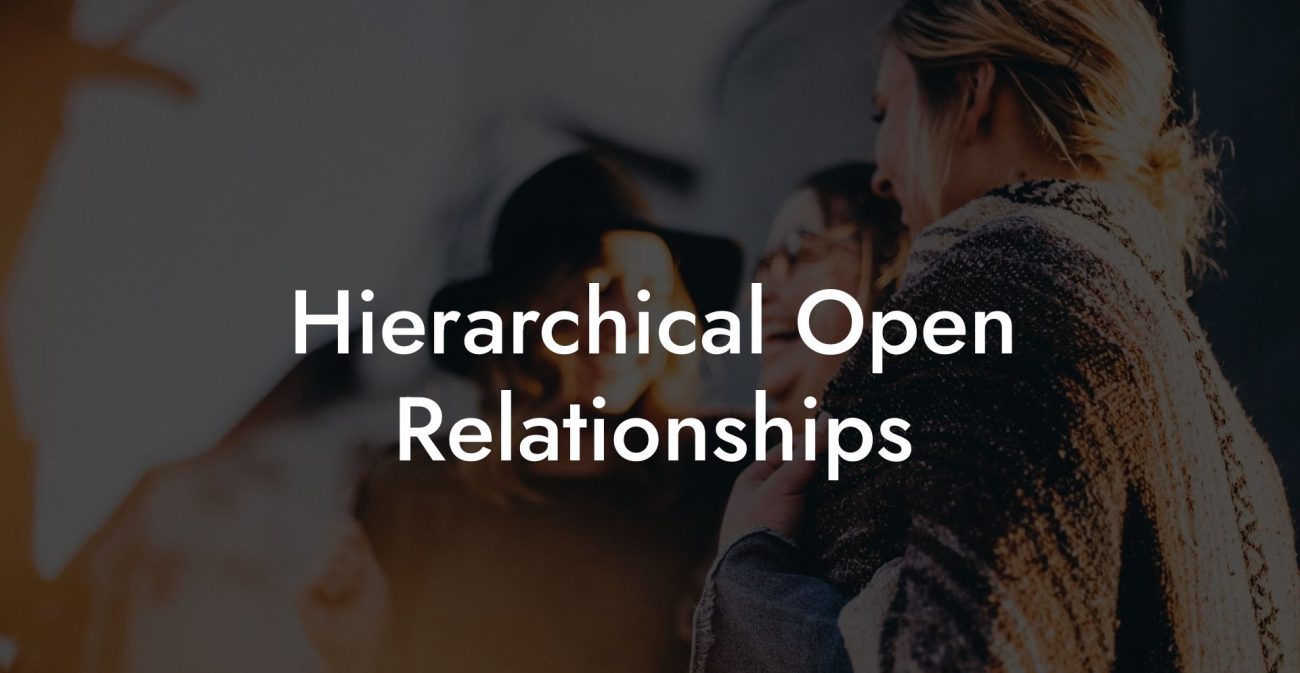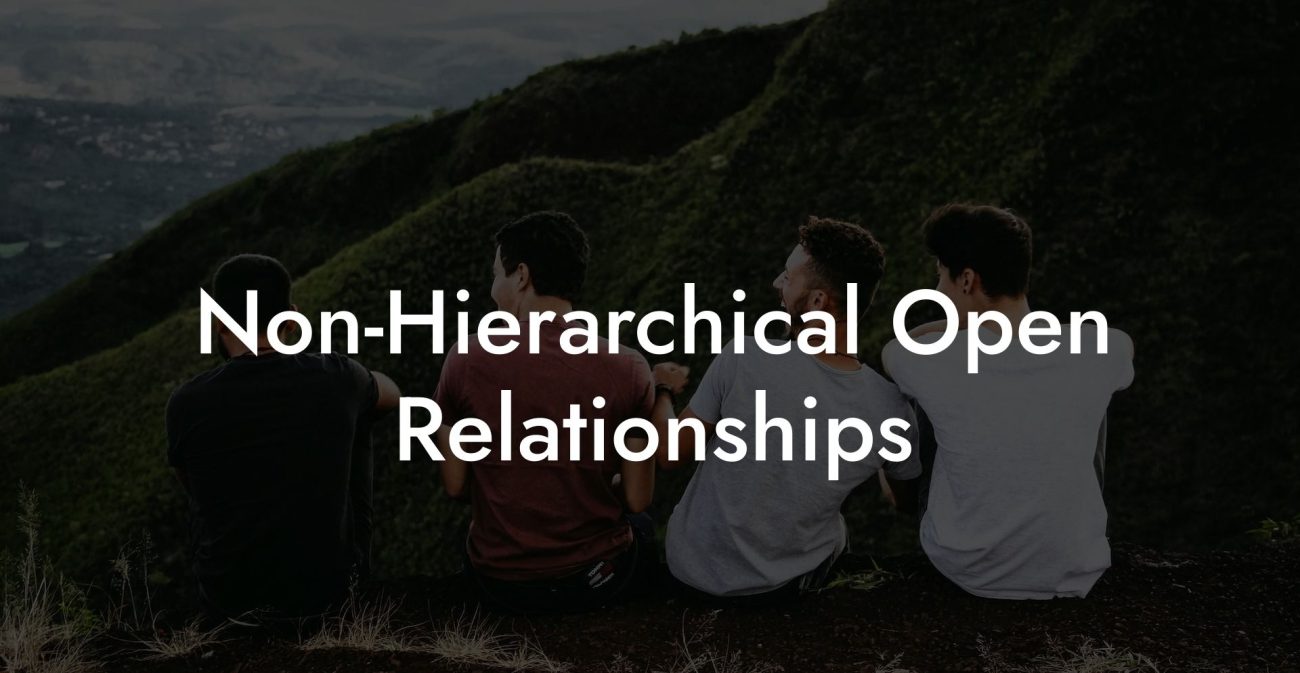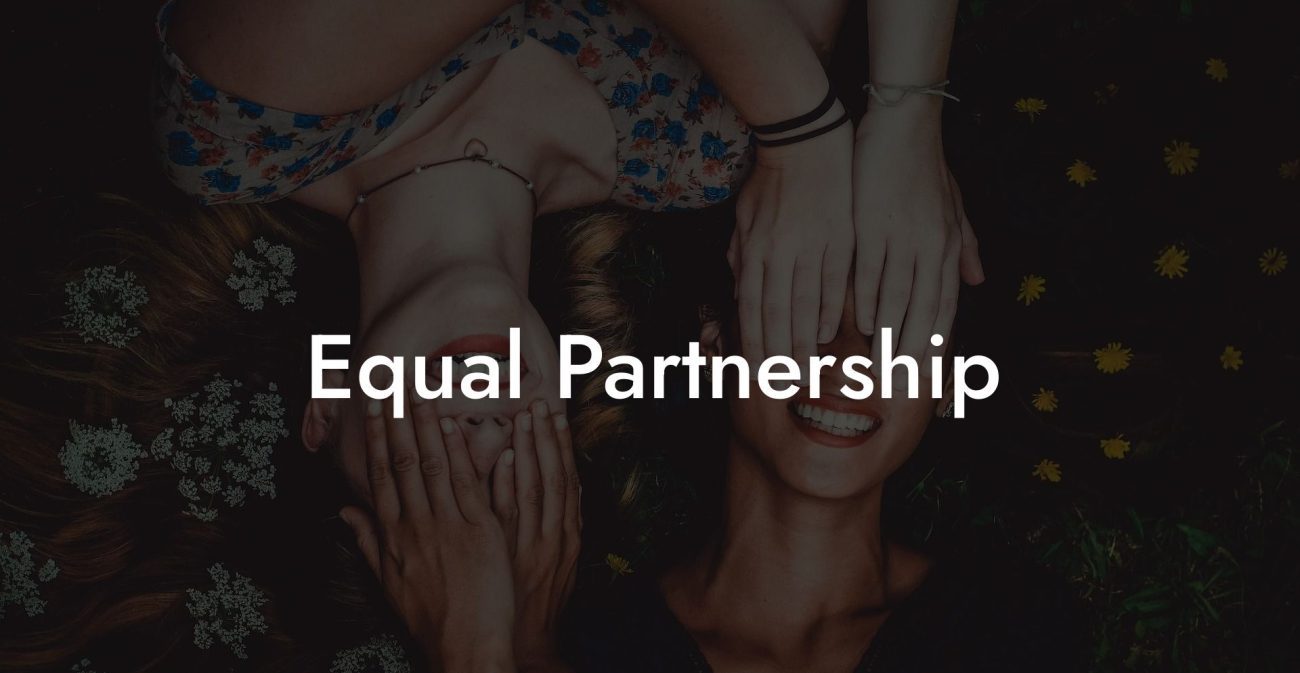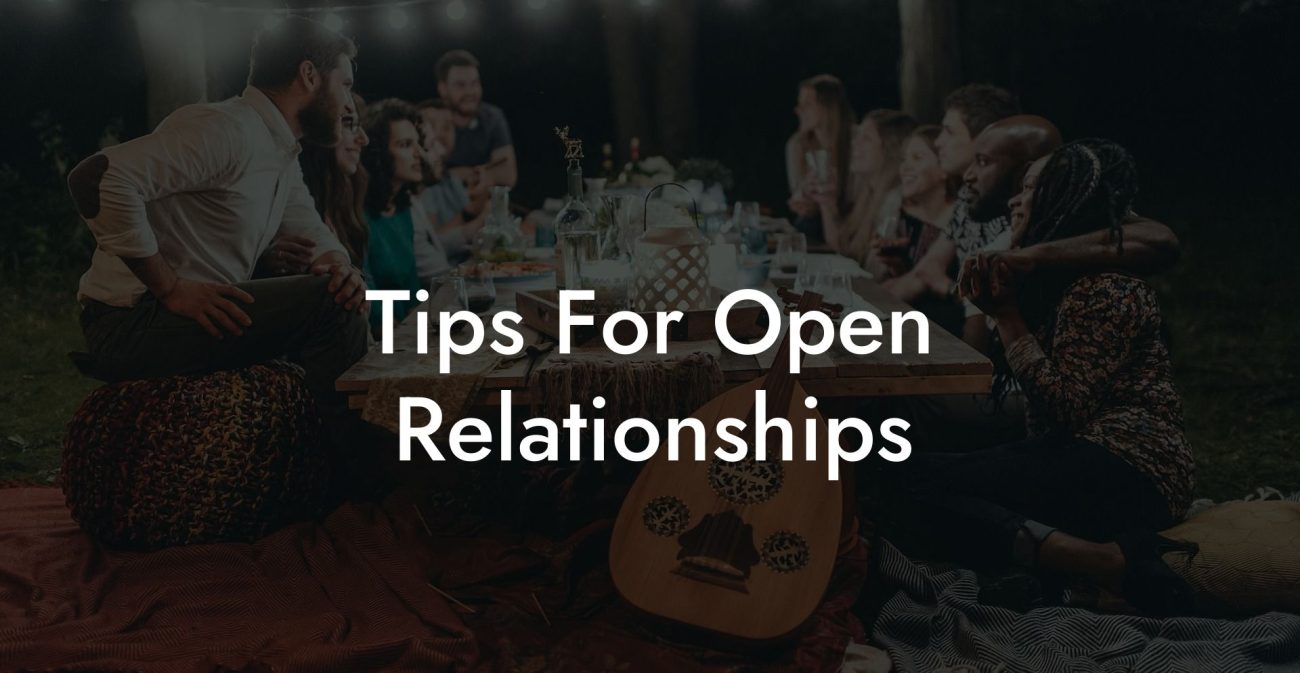Understanding Is Polyamory The Same As An Open Relationship?
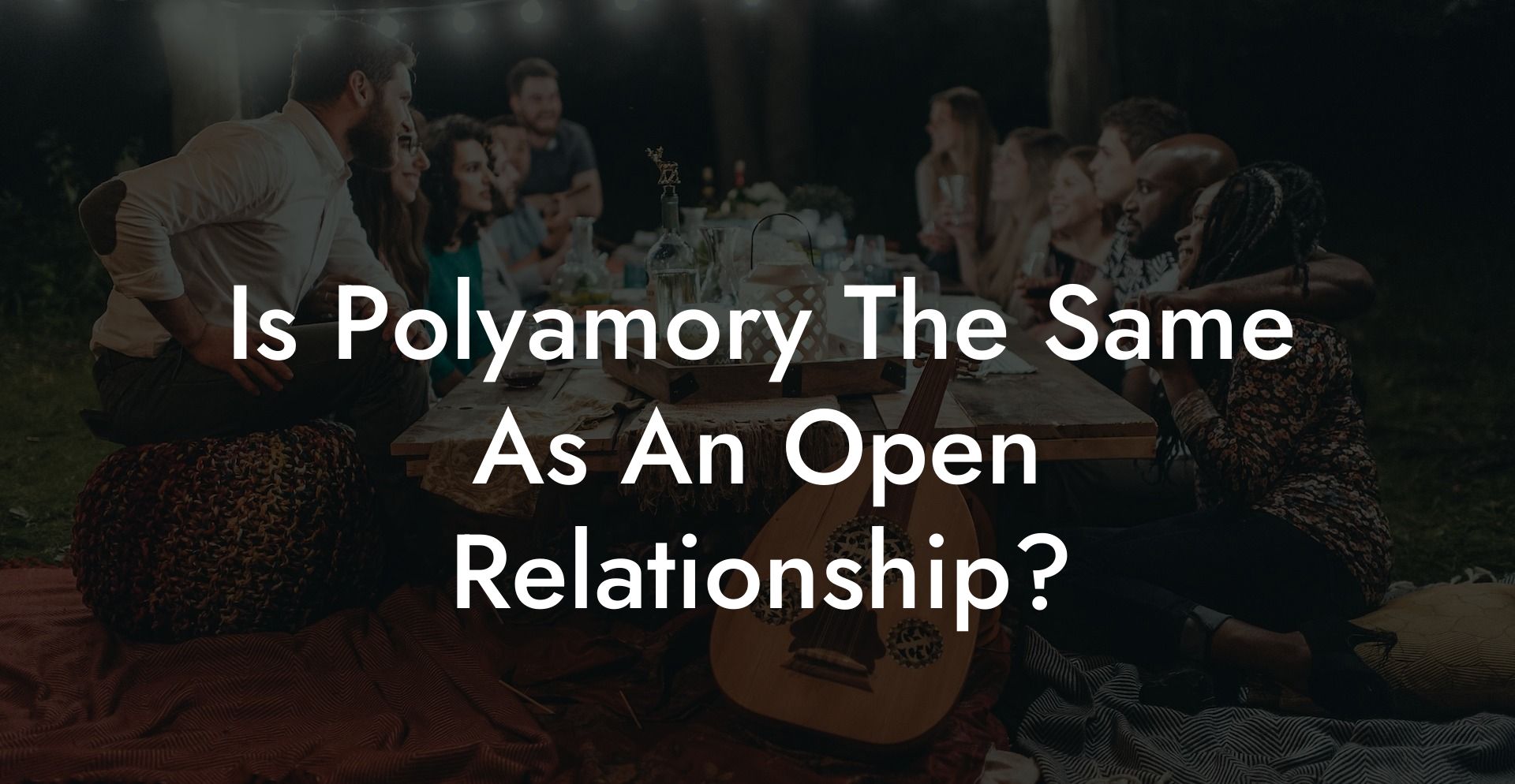
Two popular forms of consensual non-monogamy are polyamory and open relationships. While these two models share some common principles, such as mutual consent, open communication, and the rejection of strict exclusivity, they are not synonymous. This guide will provide an in-depth look at both polyamory and open relationships, examining their definitions, core principles, structural differences, emotional dynamics, legal recognition, and cultural contexts to help you understand where they converge and where they differ.
Quick Links to Useful Sections
- What is Polyamory?
- Definition and Core Principles
- Historical and Cultural Context
- What is an Open Relationship?
- Definition and Core Concepts
- Key Differences Between Polyamory and Open Relationships
- Commitment and Exclusivity
- Relationship Structure and Dynamics
- Communication and Negotiation
- Emotional and Psychological Dynamics
- Legal and Social Recognition
- Benefits and Challenges
- Benefits of Polyamory
- Challenges of Polyamory
- Benefits of Open Relationships
- Challenges of Open Relationships
- Practical Strategies for Success
- For Polyamorous Relationships
- For Open Relationships
- FAQ: Your Polyamory vs Swinging: Key Differences Questions Answered
What is Polyamory?
Definition and Core Principles
Polyamory is the practice of engaging in multiple romantic and/or sexual relationships simultaneously, with the informed consent and knowledge of everyone involved. Derived from the Greek word “poly” (meaning “many”) and the Latin “amor” (meaning “love”), polyamory embodies the belief that love is not a finite resource. It is built on the following core principles:
- Consensual Non-monogamy: All partners are aware of and agree to the existence of multiple relationships.
- Transparent Communication: Open and honest dialogue is fundamental for negotiating boundaries, discussing feelings, and resolving conflicts.
- Flexibility in Structure: Polyamorous relationships can be hierarchical (with designated primary and secondary partners) or non-hierarchical (where all relationships are valued equally).
- Mutual Respect and Autonomy: Each person’s individuality is honored, and all partners work together to support one another’s emotional and practical needs.
- Emotional Depth: Many people in polyamorous relationships seek deep, long-term emotional bonds with multiple partners, creating a diverse support network.
Historical and Cultural Context
Although the term "polyamory" is relatively modern, practices involving multiple simultaneous romantic relationships have been present in various cultures throughout history. From certain indigenous societies to modern progressive communities, polyamory has emerged as an alternative that values emotional diversity, personal freedom, and ethical non-monogamy.
Today, polyamory is gaining wider acceptance, particularly among individuals who value self-exploration and the idea that one can form deep connections with more than one person at a time.
What is an Open Relationship?
Definition and Core Concepts
An open relationship is a consensual arrangement where a couple agrees that one or both partners can pursue sexual or romantic relationships outside their primary bond. Unlike polyamory, which often emphasizes forming multiple emotionally significant relationships, open relationships typically focus on maintaining a central, primary partnership while permitting additional external encounters that are often more casual.
The fundamental elements of open relationships include:
- Mutual Consent: Both partners agree to allow external romantic or sexual experiences while prioritizing their core relationship.
- Negotiated boundaries: Couples establish clear rules regarding the nature and extent of external interactions.
- Focused Primary Bond: Despite engaging with others, the primary relationship remains the anchor for emotional and practical support.
- Transparent Communication: Regular and honest dialogue ensures that feelings, expectations, and any potential issues are openly addressed.
Historical and Cultural Context
Swinging and open relationship practices gained prominence in the mid-20th century, particularly in Western societies, as couples began exploring sexual freedom and variety while retaining their primary bond. Unlike polyamory, which emphasizes multiple long-term emotional connections, open relationships generally focus on sexual exploration and occasional romantic encounters that do not alter the foundational commitment between the primary couple.
In recent years, open relationships have become more visible as societal norms evolve, and more couples seek to enhance their sexual lives without dismantling their core partnership.
Key Differences Between Polyamory and Open Relationships
Commitment and Exclusivity
Polyamory: Involves forming multiple concurrent relationships that often carry significant emotional weight. While some polyamorous arrangements designate a primary partner, many operate on a non-hierarchical basis, with no single relationship deemed more important than the others.
Open Relationships: Focus on preserving a primary, exclusive bond while permitting external sexual or romantic encounters. The emotional commitment to the primary relationship is paramount, and interactions with others are generally more casual and recreational.
Relationship Structure and Dynamics
Polyamory: The structure can be complex and varied. It may involve several long-term, emotionally rich relationships that require continuous negotiation and deep communication. Each relationship, whether primary or secondary, contributes uniquely to the individual’s support network.
Open Relationships: Typically maintain a simpler structure centered on the primary couple. External encounters are usually defined by strict boundaries and are not intended to develop into long-term emotional connections.
Communication and Negotiation
Polyamory: Requires ongoing, multi-directional communication among all partners. Discussions involve setting, revisiting, and adjusting boundaries and expectations to manage the complexities of multiple intimate relationships.
Open Relationships: Generally involve focused, bilateral communication between the primary partners. The couple negotiates the rules for external encounters, aiming to preserve the integrity of their central bond.
Emotional and Psychological Dynamics
Polyamory: Emphasizes deep, emotional connections with multiple partners. This approach can lead to a rich tapestry of support, but also requires advanced emotional intelligence to manage potential challenges such as jealousy and divided attention.
Open Relationships: Prioritize the emotional security of the primary relationship. External interactions are typically kept separate from the core emotional bond, which can simplify the emotional dynamic but may limit the diversity of support.
Legal and Social Recognition
Polyamory: Lacks formal legal recognition because most legal frameworks are built around monogamous marriage. Polyamorous relationships rely on personal and community support rather than legal validation.
Open Relationships: Are also not formally recognized by law, but since they center on a primary couple, they benefit from the legal and social structures that support monogamous relationships.
Benefits and Challenges
Benefits of Polyamory
- Diverse Emotional Support: Multiple relationships offer a variety of perspectives and forms of care, enriching the individual’s emotional life.
- Personal Growth: Navigating the complexities of multiple bonds can lead to increased self-awareness, improved communication skills, and emotional resilience.
- Flexibility: Polyamory allows for customized relationship structures that can adapt over time to meet personal and emotional needs.
- Expanded Intimacy: Engaging with different partners can broaden one’s understanding of love and intimacy.
Challenges of Polyamory
- Emotional Complexity: Managing multiple deep connections requires a high level of emotional intelligence and can lead to challenges such as jealousy and feeling stretched too thin.
- Time Management: Balancing time among several partners can be demanding and may result in feelings of neglect if not managed carefully.
- Social Stigma: Polyamorous relationships may face misunderstanding or prejudice from those who adhere to traditional monogamous norms.
Benefits of Open Relationships
- Focused Primary Bond: The emphasis remains on a central, committed relationship, providing stability and emotional security.
- Sexual Exploration: Open relationships allow couples to explore sexual variety and novelty without compromising their core bond.
- Simplicity: The structure is less complex than polyamory, with clear rules that maintain the integrity of the primary relationship.
Challenges of Open Relationships
- Maintaining Balance: Ensuring that external encounters do not undermine the primary relationship can be challenging and requires constant attention to boundaries.
- Managing Jealousy: Even with clear boundaries, feelings of jealousy or insecurity may arise and need to be addressed through effective communication.
- Limited Emotional Expansion: Since the focus is on preserving the primary bond, there may be fewer opportunities for developing deep emotional connections with others.
Practical Strategies for Success
For Polyamorous Relationships
- Enhance Communication: Schedule regular check-ins with all partners to discuss feelings, boundaries, and expectations.
- Negotiate Agreements: Create written or digital agreements that outline roles, responsibilities, and boundaries within your relationships.
- Invest in Self-Awareness: Practice mindfulness and consider counseling to manage complex emotions and build resilience.
- Use Digital Tools: Leverage shared calendars and group chats to coordinate schedules and keep everyone informed.
For Open Relationships
- Prioritize the Primary Bond: Ensure that the emotional and practical needs of the central relationship are met first.
- Set Clear Rules: Establish and regularly revisit boundaries regarding external interactions to maintain trust and security.
- Schedule Regular Check-Ins: Have dedicated conversations with your partner to discuss how external encounters affect your core relationship.
- Focus on Self-Care: Maintain your personal well-being through regular self-care practices, hobbies, and stress management techniques.
FAQ: Your Polyamory vs Swinging: Key Differences Questions Answered
1. What is polyamory?
Polyamory is the practice of maintaining multiple consensual romantic or sexual relationships simultaneously, with an emphasis on deep emotional connections and transparent communication.
2. What is an open relationship?
An open relationship is a consensual arrangement in which a primary couple allows one or both partners to engage in additional sexual or romantic encounters, typically on a more casual basis.
3. How do commitment levels differ between polyamory and open relationships?
Polyamory involves forming multiple deep, emotionally significant bonds that may be structured hierarchically or equally, while open relationships focus on preserving the primary emotional connection, with external encounters generally being more casual.
4. What are the communication requirements for each model?
Polyamorous relationships require ongoing, multi-directional communication among all partners to negotiate boundaries and manage emotions. Open relationships primarily involve focused communication between the primary couple regarding rules and external interactions.
5. How do legal and social recognitions differ?
Neither polyamorous nor open relationships are formally recognized by legal systems in the same way as monogamous marriages. However, open relationships often benefit from the social recognition of a primary couple, whereas polyamory may face greater legal and social challenges due to its more complex structure.
6. What are the main emotional challenges in each model?
Polyamory can involve managing complex emotions such as jealousy and the need to balance multiple intimate connections, while open relationships may struggle with ensuring that external encounters do not undermine the primary bond.
7. Where can I find additional resources on these topics?
Additional resources include books like "The Ethical Slut" by Dossie Easton & Janet Hardy and "More Than Two" by Franklin Veaux & Eve Rickert, podcasts such as "Multiamory" and "Polyamory Weekly," and online communities like r/polyamory.
Resources and Community Support: Your Next Steps
- "The Ethical Slut" by Dossie Easton & Janet Hardy – A foundational book that explores ethical non-monogamy and various relationship models, including polyamory and open relationships.
- "More Than Two" by Franklin Veaux & Eve Rickert – An in-depth guide offering practical advice on managing complex relationship dynamics in multiple non-monogamous contexts.
- Podcasts: Listen to "Multiamory" and "Polyamory Weekly" for engaging discussions and personal experiences about diverse relationship models.
- Online Communities: Join forums such as r/polyamory to exchange ideas and receive support.
- Workshops and Webinars: Attend events focused on relationship psychology and ethical non-monogamy to expand your knowledge and connect with like-minded individuals.
By exploring these resources and applying the strategies outlined in this guide, you can develop a clear and informed understanding of the key differences between polyamorous and open relationships. Embrace continuous learning, open dialogue, and self-reflection as you navigate the diverse landscape of consensual non-monogamy and build relationships that resonate with your personal values.
Lost & confused by all of the terms, types and seemingly made up 3 letter acronyms?? We've got you. Check out our Ethnical Non-Monogamy Dictionary >>
Useful Interruption: Not sure which relationship vibe fits you best? Take our Relationship Test, it’ll give you the real insight into your natural relationship style. Then, dive into our binge-worthy guides (from the tried-and-true to the “wait, that’s a thing?”) and find the perfect relationship type for your life:
- Monogamy
- Open Relationships
- Ethical Non-Monogamy
- Solo Polyamory
- Non-Hierarchical Polyamory
- Hierarchical Polyamory
- Relationship Anarchy
- Swinging
Now back to the main article but yeah take the test...

